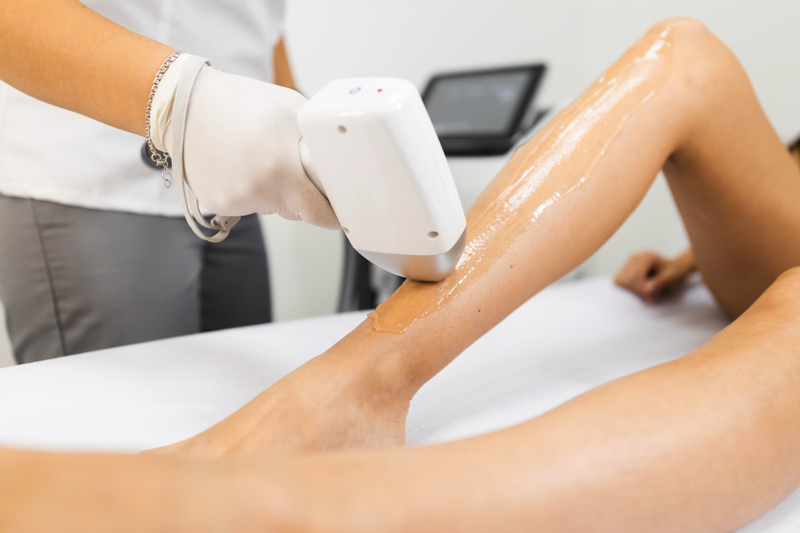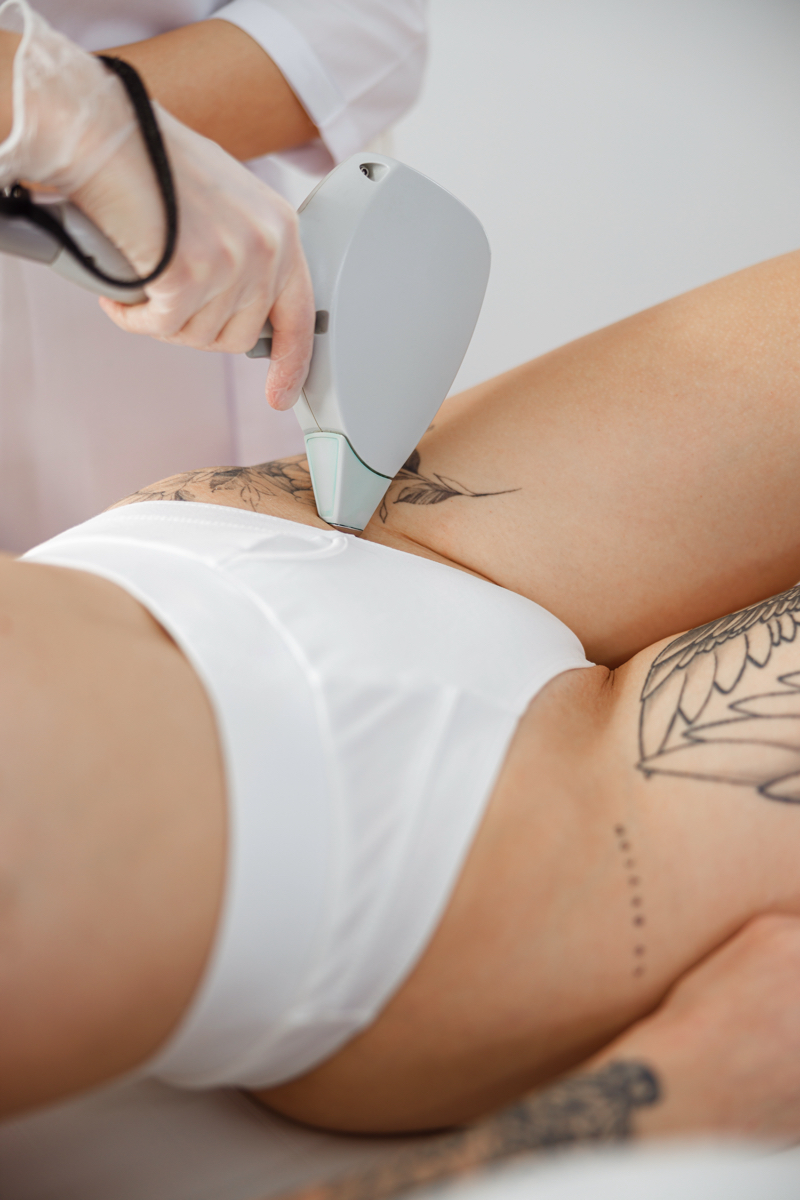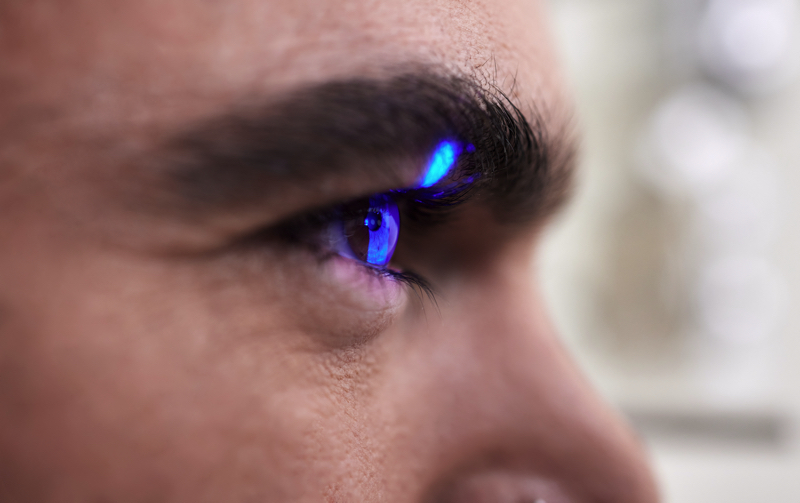FAQs


Frequently Asked Questions About Hair Removal
Lasertrolysis consists of several laser systems to perform quick and long lasting hair removal. All emit light that is absorbed by the pigment located in the hair follicle. The laser is pulsed, or “turned on”, for only a fraction of a second. The duration of the pulses has been carefully determined so that the energy will be absorbed by the hair follicle and disable it but not long enough that excess heat is transferred to the surrounding skin. The result is safe and effective hair removal.

Is Laser hair removal better than waxing?
Lasers are precise instruments that can be adjusted to the exact parameters that will specifically disable the hair follicle. Unlike precision “single-hair” treatments like electrolysis, the laser uses a wide beam which treats many hairs at once. Because of this, large areas like a full man’s back, full legs or arms can be completely hair free within a few hours. You will see immediate results that will last far longer than shaving, tweezing, waxing, chemical depilation, or other temporary treatments. One of the systems – the EpilaserTM ruby laser – was recently cleared by the FDA for permanent hair reduction.
Is laser hair removal safe?
The EpilaserTM was developed from more than 30 years of laser research by physicians at the Massachusetts General Hospital’s Wellman Laboratories, and has been shown through extensive clinical trials at more than 10 laser U.S. and Canadian laser research centers to provide safe and effective hair removal.
The laser parameters were carefully defined by studying the anatomy of the hair follicle and precisely matching the laser light and pulse duration to the follicle size, depth, and location to safely and effectively
remove the hair.
How long does laser hair removal take?
Because the laser treats many hairs at a time, facial areas (chin, lip, cheeks, etc.) can be treated in 10 – 15 minutes. Small body areas (underarms, bikini line, etc.) take less than a half hour. Larger body areas (full back, full legs, both arms, etc.) usually an hour or more, depending upon the size
of the area and the density of the hair.
Does laser hair removal hurt?
Most laser clients describe the treatment as mildly uncomfortable, but not painful.
For sensitive facial and body areas, however, some people do ask for an anesthetic. If you decide you would prefer an anesthetic, Medical Directors can prescribe a topical anesthetic for you.
What happens to your skin after laser treatment?
Within several minutes of the treatment, the treated area will be come slightly red and puffy. This reaction subsides, and within a few hours the area returns to normal. Since the laser does not burn or cut the skin in any
way, no bandages are necessary, and you can return to your normal activities
immediately.
How many laser hair removal treatments will I need?
The laser works by disabling hairs that are in their active growth cycle at the time of treatment. Since other hairs will enter their growth cycles at different times, additional treatments may be necessary to disable all of the follicles in a given area. Lasertrologists will work with you to develop the treatment program that best fulfils your hair removal needs, and can also provide conventional electrolysis on sparse growth or persistant regrowth. The combination will be very quick, permanent hair removal.


What is the principle behind laser tattoo removal?
A RUBY LASER WHICH EMITS PURE RED LIGHT is used to eliminate tattoos and abnormal brown or dark skin pigmentation. Since the principle of laser treatment is based on the absorption of light, however, some colours of tattoos are easier to remove than others. For example, black and blue ink
clears easily because they can absorb red light well. However, a red tattoo can be more difficult to remove.
How does it work?
This laser mechanically shatters the pigment of the tattoo, which is dispersed through the skin and carried away by other cells. While the surface of the skin isn’t broken as a result of treatment with the Pulsed Dye Laser, there may be some pigment exiting through the surface of the skin with the Ruby Laser.
Does insurance cover tattoo removal?
Patients who want tattoos removed by the Ruby Laser must pay for the treatment themselves. These fees, the same as those for other cosmetic services, are used to offset the costs involved with operating the equipment.
Is this treatment guaranteed?
The tattoo removal service isn’t in place to make people think that tattoos are temporary. It usually takes six or more treatments to remove a tattoo, and complete removal cannot be guaranteed. However, having a tattoo removed can be a great relief to some people.
Does it hurt?
There is some discomfort associated with the Ruby Laser treatment, and there may be bruising or blistering for a brief time after each treatment. However, even with this treatment there is less than a five percent chance of scarring.
Frequently Asked Questions About Tattoo Removal



Frequently Asked Questions About Eye Laser Surgery



What is laser vision correction?
Laser vision correction of the eye is a precise, minimally invasive laser treatment that reshapes the cornea, helping your eye to focus properly. It can reduce or eliminate the need for contact lenses or eyeglasses.
This treatment is performed with an excimer laser, which has been thoroughly tested and clinically proven. In fact, since the United States Food and Drug Administration (FDA) approved the procedure in October 1995, more than 1,000,000 procedures have been performed in the U.S. alone. Over 3,000,000 treatments have been performed in the last eight years worldwide.
What is the difference between RK and PRK?
PRK, or Photorefractive Keratectomy, does not include an incision on the cornea. Instead, an excimer laser carefully shapes or sculpts the
corneal surface by ablating or removing tissue from the corneal surface. The thickness of tissue removed is often less than that of a human hair. Laser vision correction with PRK involves the removal of less than ten percent of the corneal tissue because the excimer laser is so precise. The end result is a re-sculpting of the cornea, allowing light to properly focus on the retina. PRK was studied in clinical trials for six years before approval in the United States. It uses a computerized laser to correct nearsightedness(myopia) and farsightedness(hyperopia).
What is LASIK?
LASIK (Laser in-situ keratomileusis) also utilizes the excimer laser to remove corneal tissue in order to reshape the cornea. With LASIK, the surgeon first creates a flap on the cornea with a device called a microkeratome. He then uses the excimer laser to reshape the cornea below the corneal flap. The corneal flap is then placed back into position and healing begins with good surface integrity in 12 hours.
What is an Excimer Laser?
A laser is an instrument that can produce and control a powerful beam of light. Laser light can be directed and controlled more precisely than normal light, and it can be delivered in extremely brief, intense pulses.
The excimer laser produces a beam of ultraviolet light in pulses that last only a few billionths of a second. Each pulse removes a microscopic amount of tissue by evaporating it, producing very little heat and leaves underlying tissue virtually unchanged.
Is laser vision correction the same as Radial Keratotomy (RK)?
No. While both treatments are designed to correct nearsightedness, RK and laser vision correction are not the same.
The revolution in eyecare – changing the shape of the cornea itself – began with radial keratotomy (RK). Although successful with some types of nearsightedness, RK is an invasive surgical procedure involving the use of scalpels to make a series of corneal incisions, cutting into as much as 95%
of the cornea.
Laser vision correction uses a state-of-the-art, computerized excimer laser to reshape the cornea with no incisions. During the last decade, physicians worldwide have turned increasingly to laser vision correction and have performed the treatment over one million times.
What can I expect from the laser vision correction procedure?
Prior to treatment, the physician administers anesthetic eyedrops to the patient to numb the cornea. After the eye drops have had a chance to take effect, the patient is positioned in a comfortable chair centered underneath the laser and is asked to focus on a small bright light. Once the laser is properly aligned and the patient feels comfortable focusing, the actual
treatment may begin.
Depending upon the amount of correction required, the laser treatment itself takes about 15-40 seconds. The patient remains awake throughout the treatment. The treatment itself is painless, although the patient may notice a “gritty” sensation in the eye or some discomfort in the first 24-48 hours.
Medication may be provided to minimize any discomfort. Typically, the patient will notice improved vision within 3-5 days and can usually resume normal activities in 1-3 days. Often patients prefer to be treated on a Thursday or Friday afternoon to reduce time away from work. Vision may fluctuate over the next few weeks, and usually stabilizes within three months.
How do I know if I'm a good candidate for laser vision correction?
However, only an eye doctor who is specially trained in laser vision correction can evaluate a patient’s suitability for the treatment.
How do I know if it's safe?
Can I afford the treatment?
Ability to actively participate in a hobby, sports or your profession without the aid of glasses or contacts might be very important to you. Most centers and doctors offer a range of payment options to meet your needs.
What are the risks and side effects that I should be aware of?
previous cases. Serious complications are very rare, and the most likely is an infection, which is treatable with medication.
Some possible complications include haze, perforation of the cornea, induced astigmatism, and under- or over-correction. However, thousands of refractive procedures have been performed in the United States, and they are recognized as some of the most successful and gratifying procedures performed. Since risks and side effects vary from patient to patient and are very important to consider, your refractive surgeon will cover these issues with you on a one-to-one basis.
Will I regain perfect vision with these techniques?
What is the treatment like?
The results of the patient’s eye exam will determine the treatment parameters that are entered in to the laser. The actual laser delivery time is generally between 15-45 seconds, and the number of pulses is dependent on how much correction is required. The patient remains awake and pain-free through the treatment. After the treatment, ointment and/or drops are placed in the eye to facilitate the healing process. During the first 24 to 48 hours after the treatment, most patients will experience a “gritty” sensation in the eye
and/or some discomfort. Typically, the patient will notice improved vision in 3-5 days following the treatment. Treatment follow-up generally involves several visits to the doctor. Vision may fluctuate over the next few weeks, and usually stabilizes within three months.
